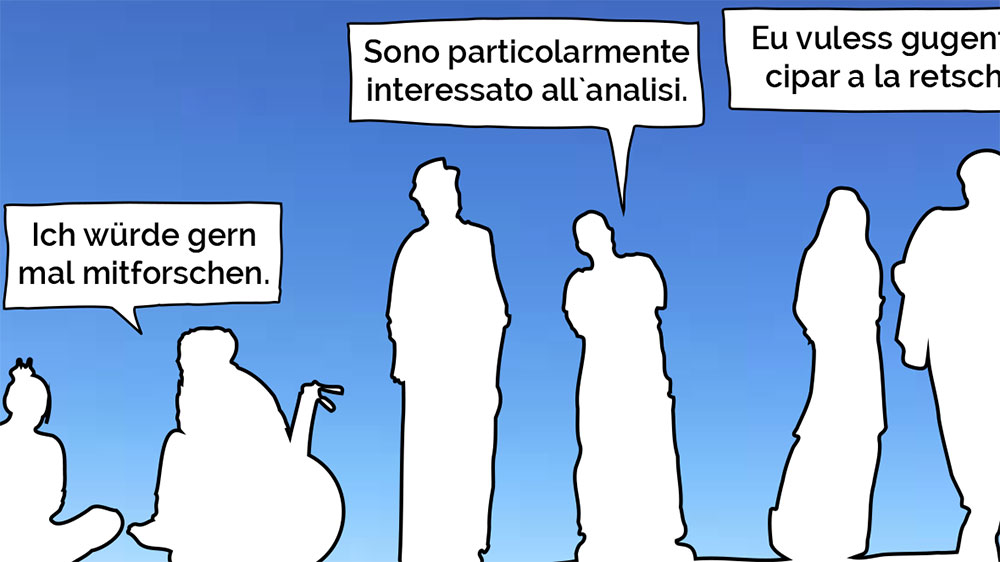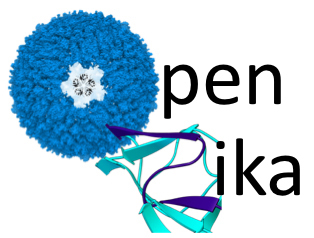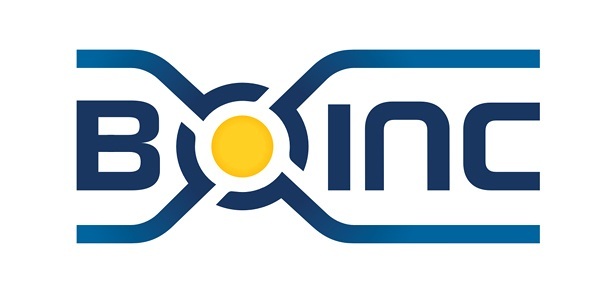From University of Zürich (Universität Zürich) (CH)
22 Jun 2021
Citizen Science
Around half of the Swiss population is interested in actively taking part in academic research. Social and environment topics are among the most popular.

There is great interest in citizen science: around half of the Swiss population can imagine participating in participatory research. Image: Anna Yang, Fachhochschule Nordwestschweiz.
Whether it’s collecting hydrological data or measuring biodiversity, there are a host of UZH projects where people with a thirst for knowledge can get involved – even if they don’t have an academic degree or university background. The Citizen Science Center Zürich, run jointly by UZH and ETH Zürich, has been developing and promoting citizen science projects together with the Participatory Science Academy since 2017.
First-ever Swiss-wide data
Citizen science is based on the idea that anyone can participate in research. But who might be willing to spend their time on participatory research projects, and under what conditions? To date there was no well-founded data available on the overall willingness of Swiss people to get involved in such research. “We wanted to fill this gap with a representative study to be able to identify our target groups even better,” explains Susanne Tönsmann, managing director of the Participatory Science Academy.
The study was developed by the Participatory Science Academy, the UZH Department of Communication and Media Research and the FHNW School of Social Work. A total of 1,394 people over the age of 18 in Switzerland were surveyed for the study.
The key findings include:
Awareness:
8% of respondents are familiar with the term “citizen science”, and 15% know the term “participatory research”.
Participation:
5% of respondents have taken part in a citizen science project before.
48% of respondents could imagine taking part in participatory research. A majority (83%) would be prepared to invest at least a few hours a month for this. People who are particularly interested in citizen science mainly include young people, people with higher levels of education, and people who are open to scientific topics.
When it comes to the reasons for not participating, 40% stated that they lacked the required knowledge, 29% said they didn’t have time, and 27% said they weren’t interested.
Research tasks:
“Collecting and classifying data” is a popular task (50%), followed by “interpreting results” (43%) and “co-determining a research question” (33%).
Topics:
Social and environmental topics are most popular (55%), followed by the environment/animals (49%), technology/natural sciences (48%), medicine/health (44%) and art/culture (21%).
______________________________________________________________________________________________________________Major Avenues to Citizen Science
From World Community Grid (WCG)
“World Community Grid (WCG) brings people together from across the globe to create the largest non-profit computing grid benefiting humanity. It does this by pooling surplus computer processing power. We believe that innovation combined with visionary scientific research and large-scale volunteerism can help make the planet smarter. Our success depends on like-minded individuals – like you.”
BOINC is a leader in the field(s) of Distributed Computing, Grid Computing and Citizen Cyberscience.BOINC is more properly the Berkeley Open Infrastructure for Network Computing.
CAN ONE PERSON MAKE A DIFFERENCE? YOU BET!!
Please visit the project pages-


Help Stop TB

Outsmart Ebola together


Mapping Cancer Markers
BOINC is a leader in the field(s) of Distributed Computing, Grid Computing and Citizen Cyberscience.BOINC is more properly the Berkeley Open Infrastructure for Network Computing, developed at UC Berkeley.

Uncovering Genome Mysteries
Discovering Dengue Drugs – Together

World Community Grid is a social initiative of IBM Corporation
IBM Corporation
Visit the BOINC web page, click on Choose projects and check out some of the very worthwhile studies you will find. Then click on Download and run BOINC software/ All Versons. Download and install the current software for your 32bit or 64bit system, for Windows, Mac or Linux. When you install BOINC, it will install its screen savers on your system as a default. You can choose to run the various project screen savers or you can turn them off. Once BOINC is installed, in BOINC Manager/Tools, click on “Add project or account manager” to attach to projects. Many BOINC projects are listed there, but not all, and, maybe not the one(s) in which you are interested. You can get the proper URL for attaching to the project at the projects’ web page(s) BOINC will never interfere with any other work on your computer.
MAJOR PROJECTS RUNNING ON BOINC SOFTWARE
SETI@home The search for extraterrestrial intelligence. “SETI (Search for Extraterrestrial Intelligence) is a scientific area whose goal is to detect intelligent life outside Earth. One approach, known as radio SETI, uses radio telescopes to listen for narrow-bandwidth radio signals from space. Such signals are not known to occur naturally, so a detection would provide evidence of extraterrestrial technology.
Radio telescope signals consist primarily of noise (from celestial sources and the receiver’s electronics) and man-made signals such as TV stations, radar, and satellites. Modern radio SETI projects analyze the data digitally. More computing power enables searches to cover greater frequency ranges with more sensitivity. Radio SETI, therefore, has an insatiable appetite for computing power.
Previous radio SETI projects have used special-purpose supercomputers, located at the telescope, to do the bulk of the data analysis. In 1995, David Gedye proposed doing radio SETI using a virtual supercomputer composed of large numbers of Internet-connected computers, and he organized the SETI@home project to explore this idea. SETI@home was originally launched in May 1999.”
SETI@home is the birthplace of BOINC software. Originally, it only ran in a screensaver when the computer on which it was installed was doing no other work. With the power and memory available today, BOINC can run 24/7 without in any way interfering with other ongoing work.

The famous SET@home screen saver, a beauteous thing to behold.
einstein@home The search for pulsars. “Einstein@Home uses your computer’s idle time to search for weak astrophysical signals from spinning neutron stars (also called pulsars) using data from the LIGO gravitational-wave detectors, the Arecibo radio telescope, and the Fermi gamma-ray satellite. Einstein@Home volunteers have already discovered more than a dozen new neutron stars, and we hope to find many more in the future. Our long-term goal is to make the first direct detections of gravitational-wave emission from spinning neutron stars. Gravitational waves were predicted by Albert Einstein almost a century ago, but have never been directly detected. Such observations would open up a new window on the universe, and usher in a new era in astronomy.”

MilkyWay@Home Milkyway@Home uses the BOINC platform to harness volunteered computing resources, creating a highly accurate three dimensional model of the Milky Way galaxy using data gathered by the Sloan Digital Sky Survey. This project enables research in both astroinformatics and computer science.”

Leiden Classical “Join in and help to build a Desktop Computer Grid dedicated to general Classical Dynamics for any scientist or science student!”

World Community Grid (WCG) World Community Grid is a special case at BOINC. WCG is part of the social initiative of IBM Corporation and the Smarter Planet. WCG has under its umbrella currently eleven disparate projects at globally wide ranging institutions and universities. Most projects relate to biological and medical subject matter. There are also projects for Clean Water and Clean Renewable Energy. WCG projects are treated respectively and respectably on their own at this blog. Watch for news.


Rosetta@home “Rosetta@home needs your help to determine the 3-dimensional shapes of proteins in research that may ultimately lead to finding cures for some major human diseases. By running the Rosetta program on your computer while you don’t need it you will help us speed up and extend our research in ways we couldn’t possibly attempt without your help. You will also be helping our efforts at designing new proteins to fight diseases such as HIV, Malaria, Cancer, and Alzheimer’s….
GPUGrid.net “GPUGRID.net is a distributed computing infrastructure devoted to biomedical research. Thanks to the contribution of volunteers, GPUGRID scientists can perform molecular simulations to understand the function of proteins in health and disease.” GPUGrid is a special case in that all processor work done by the volunteers is GPU processing. There is no CPU processing, which is the more common processing. Other projects (Einstein, SETI, Milky Way) also feature GPU processing, but they offer CPU processing for those not able to do work on GPU’s.


These projects are just the oldest and most prominent projects. There are many others from which you can choose.
There are currently some 300,000 users with about 480,000 computers working on BOINC projects That is in a world of over one billion computers. We sure could use your help.
My BOINC

______________________________________________________________________________________________________________
See the full article here .
Please help promote STEM in your local schools.
The University of Zürich (Universität Zürich) (CH), located in the city of Zürich, is the largest university in Switzerland, with over 26,000 students. It was founded in 1833 from the existing colleges of theology, law, medicine and a new faculty of philosophy.
Currently, the university has seven faculties: Philosophy, Human Medicine, Economic Sciences, Law, Mathematics and Natural Sciences, Theology and Veterinary Medicine. The university offers the widest range of subjects and courses of any Swiss higher education institutions.
Since 1833
As a member of the League of European Research Universities (EU) (LERU) and Universitas 21 (U21) network, the University of Zürich belongs to Europe’s most prestigious research institutions. In 2017, the University of Zürich became a member of the Universitas 21 (U21) network, a global network of 27 research universities from around the world, promoting research collaboration and exchange of knowledge.
Numerous distinctions highlight the University’s international renown in the fields of medicine, immunology, genetics, neuroscience and structural biology as well as in economics. To date, the Nobel Prize has been conferred on twelve UZH scholars.
Sharing Knowledge
The academic excellence of the University of Zürich brings benefits to both the public and the private sectors not only in the Canton of Zürich, but throughout Switzerland. Knowledge is shared in a variety of ways: in addition to granting the general public access to its twelve museums and many of its libraries, the University makes findings from cutting-edge research available to the public in accessible and engaging lecture series and panel discussions.
1. Identity of the University of Zürich
Scholarship
The University of Zürich (UZH) is an institution with a strong commitment to the free and open pursuit of scholarship.
Scholarship is the acquisition, the advancement and the dissemination of knowledge in a methodological and critical manner.
Academic freedom and responsibility
To flourish, scholarship must be free from external influences, constraints and ideological pressures. The University of Zürich is committed to unrestricted freedom in research and teaching.
Academic freedom calls for a high degree of responsibility, including reflection on the ethical implications of research activities for humans, animals and the environment.
Universitas
Work in all disciplines at the University is based on a scholarly inquiry into the realities of our world
As Switzerland’s largest university, the University of Zürich promotes wide diversity in both scholarship and in the fields of study offered. The University fosters free dialogue, respects the individual characteristics of the disciplines, and advances interdisciplinary work.
2. The University of Zurich’s goals and responsibilities
Basic principles
UZH pursues scholarly research and teaching, and provides services for the benefit of the public.
UZH has successfully positioned itself among the world’s foremost universities. The University attracts the best researchers and students, and promotes junior scholars at all levels of their academic career.
UZH sets priorities in research and teaching by considering academic requirements and the needs of society. These priorities presuppose basic research and interdisciplinary methods.
UZH strives to uphold the highest quality in all its activities.
To secure and improve quality, the University regularly monitors and evaluates its performance.
Research
UZH contributes to the increase of knowledge through the pursuit of cutting-edge research.
UZH is primarily a research institution. As such, it enables and expects its members to conduct research, and supports them in doing so.
While basic research is the core focus at UZH, the University also pursues applied research.















